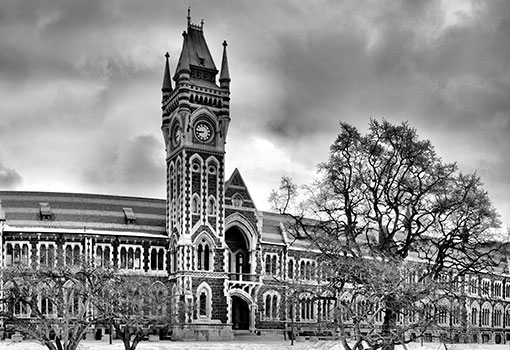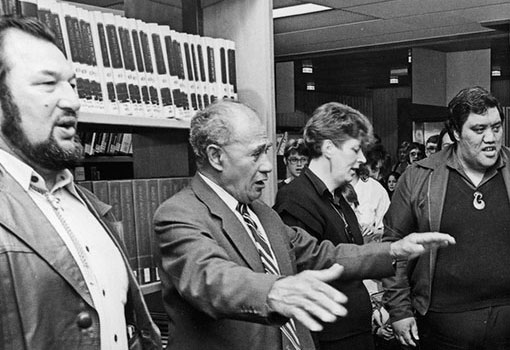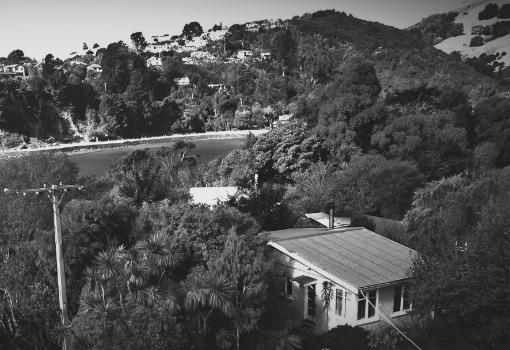
Vale Maurice Gee, 1931 – 2025
By The Spinoff - Claire Mabey | Posted: Monday Jun 16, 2025
The great Aotearoa writer Maurice Gee has died. Books editor Claire Mabey pays tribute.
Original Article: Vale Maurice Gee, 1931 – 2025 | The Spinoff
Maurice Gee has died at the age of 93. In a statement sent to media, Gee’s children Nigel, Emily and Abigail Gee confirmed that their father died peacefully in his longtime home in Nelson, the inspiration for many of his stories.
“He lived a long and full life and approached death with cheerfulness and calm. He asked us not to grieve,” read the statement. “Our father touched the lives of many through his words and leaves behind a remarkable legacy in New Zealand literature.”
Since the news of Gee’s death broke on Sunday June 15, there has been an outpouring of gratitude from readers and writers across Aotearoa. Gee is the author of Plumb, which in a 2018 Spinoff poll was found to be New Zealand’s favourite and best novel. He is also the author of Under the Mountain, one of the most enduring children’s books we have. It is rare for an author to be acclaimed for writing both for adults and for children; but Gee took both audiences seriously – he wrote truthfully and fearlessly, always – and his writing in both worlds was equally beloved.
Gee’s novels for adults include The Plumb Trilogy – Plumb (1978), Meg (1981) and Sole Survivor (1983) – In My Father’s Den (1972), Live Bodies (1988), Crime Story (1994), and Ellie and the Shadow Man (2001). His novels for children include the fantasies Under the Mountain (1979), The World around the Corner (1980), the Halfmen of O trilogy – The Halfmen of O (1982), The Priests of Ferris (1984) and Motherstone (1985) – Salt (2007), Gool (2008), and The Severed Land (2017). He also wrote historic fiction for children including The Fat Man (1994), Hostel Girl (1999) and The Fire-Raiser (1986).
Among Gee’s awards and honours is the Robert Burns Fellowship in 1964; the Fiction Prize at the New Zealand Book Awards for Plumb in 1979; the Book of the Year at the AIM Children’s Book Awards for The Halfmen of O in 1982; an honorary doctorate for literature from the University of Victoria in 1989; the Prime Minister’s Award for Literary Achievement in 2004; the Deutz Medal for Fiction at the Montana New Zealand Book Awards for Live Bodies in 1998; The New Zealand Post Young Adult Fiction award for Salt in 2008; and in 2017 Gee won the Copyright Licensing NZ Award for Young Adult Fiction for The Severed Land at the Book Awards for Children and Young Adults.
Gee published a collection of short stories in 1986; and in 2018 published a memoir in three parts, Memory Pieces. Gee’s biographer is Rachel Barrowman who in 2015 published, Maurice Gee: Life and Work with Te Herenga Waka University Press. It is a remarkably detailed piece of work and one that reveals both the dark and the light of Gee’s life. In a letter Gee wrote for the launch of Barrowman’s biography, he said:
“Reading Rachel’s book has been a strange experience for me. Seeing my life unroll again, or play as though on a screen, made me want to applaud myself for getting so much done, in work and relationships, and at other times had me squirming with embarrassment at my stupidities and shrinking with shame at cruelties and waste.
“It’s all in the book. This is the biography I asked for when Rachel and I first spoke about it nine years ago. ‘Put in whatever you can find,’ I said, not quite understanding that she’d find so much. But I don’t like biographies with holes in them. This one has no holes except for those Rachel has uncovered in her research and looked into with a clear eye. The research has been thorough, unrelenting, illuminating — illuminating even for me.”
Many of the messages of gratitude and celebration for Gee are concerned with the sheer impact of his stories. A lot of Gee’s struggles and triumphs are inside his fiction. For many, the slim, stunning children’s novel Under the Mountain is a core memory. A great imaginative transference that stuck. One of the reasons Gee’s story of slug-like aliens called the Wilberforces had such a tremendous effect on readers is that the danger was located in Auckland. It is difficult to look at Rangitoto without thinking of those voracious creatures turning the land to mud. Gee was always concerned with the upending of the environment and the potential for younger generations to heal such destruction.
Gee is said to have described himself as “a New Zealandy sort of writer living in a New Zealandy sort of place … writing New Zealandy sort of books.” It’s this slant on home – that ‘y’ at the end – that both grounds his work and tilts it. Through Gee’s novels we see ourselves from a fresh angle. We meet ourselves in Gee’s places and in his ordinary, extraordinary people.
Gee’s Halfmen of O series gave his home of Nelson a portal to another world suffering under a totalitarian regime oppressing the voices of the land and destroying itself only for the pursuit of wealth. Gee wrote seriously for children: his worldbuilding is vibrant, startling, textured but it is also deeply enmeshed with the realities of oppressive and violent societies. Like the best children’s writers, Gee never underestimated his reader’s capacity to walk with him into these dangers and work out what was going on and what to learn from them.
For many years professor Kathryn Walls taught an honours level English paper called New Zealand Children’s Literature at Victoria University in which students would study the children’s novels of Maurice Gee and Margaret Mahy. A rare example of academia looking at children’s books to see how they worked, what they said about their authors; how they might reflect their time, and influence their readers. Like Mahy, Gee was one of the greatest writers New Zealand has ever had and he did not withhold that talent from young people. Gee’s body of literature is revelatory in that it expresses a pattern of invention and research across depths and genre, never subjugating one audience for the other, but oscillating between them, using them in different ways. This pattern revealed a great respect for children’s writing, and for children as serious readers, that is not always present in an industry that often sees writing for children as somehow a lesser pursuit.
One of my favourite of Gee’s adult novels is Ellie and the Shadow Man. It has lingered in me for years because it was one of the first novels I read about a woman living as an artist. Ellie Crowther is a painter whose work rises to acclaim. Only her canvases begin to be haunted by a figure who she calls her “shadow man”. I have vivid memories of the ways Ellie’s history starts to emerge, inform and entangle with her art. It is a novel that showed me that life – ordinary, difficult, eerie, troublesome, surprising life – can make great art.
Every Gee fan will have their favourite novel. New fans have 35 books to explore and discover.
In an interview with The Spinoff in 2024, when asked how he feels when he looks at his body of work, Gee said: “I feel a sense of satisfaction and a sense that, considering all things, I’ve done as much and as well as I could have.”
It is moving, painful, to think of Gee’s work from this moment of great loss. But heartening to know that the great writer left this world satisfied and with a legacy that will live on for many years, and through many readers, to come.
The Spinoff will be publishing a tribute page to honour the life and work of Maurice Gee. If you would like to contribute please contact clairemabey@thespinoff.co.nz



